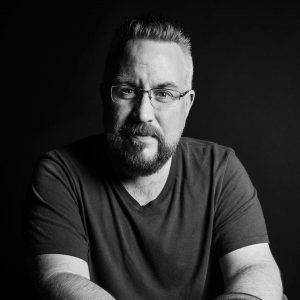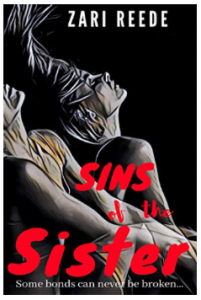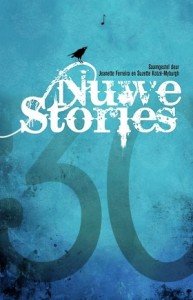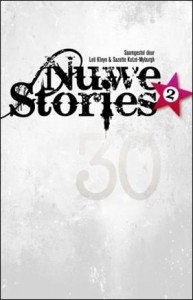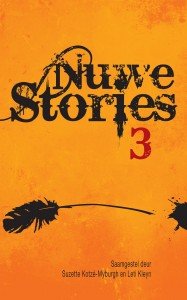For as long as I can remember, the month of February has been associated with romantic love and its celebration. Every year, Cupid, St. Valentine and Hallmark conspire to make people the world over feel guilty for not making enough grand gestures or declarations of everlasting devotion to their partners, crushes and/or secret lovers. It would seem that love is a thing universally craved, and even those who have it want to be reminded regularly that they still do. But are love and romance really that simple?
This week, the day of love, St. Valentine’s Day, will be widely celebrated and women (and some men) across the globe will read more romance novels than any other genre out there. They will read Contemporary Romance, Romantic Suspense, Historic Romance, Gothic Romance, Regency Romance, Paranormal Romance, Erotica and a host of other sub-genres to do with the topic of love. This is also true all the other weeks of the year, as Romance is the most read genre today, by a fairly large margin. But what makes Romance such a popular genre for (predominantly female) readers, and why is it that they just can’t seem to get enough?
The answer, according to Sarah Frantz Lyons, is that:
“Women write and read romance heroes to examine, subvert, discuss, revel in, and reject patriarchal constructions of masculinity…” (see “More on the business of Romance novels” in Further Reading at the end of this post.)
While this statement is certainly true, it also massively simplifies the way the romance novel is received by the average reader. Not only does the romance novel not belong strictly to female authorship, but it isn’t strictly written for women, and never was. The romance novel isn’t simply about gender roles or sexuality either. There is an expectation of the genre, now more than ever, to also allow the reader to change their mind about their own boundaries and expectations of romance, love and/or sex, and perhaps on a more subtle level, of sex in the loveless relationship. And while not all romance novels concentrate on the sexual aspects of a relationship, it is inevitable that even the most demure novels in the genre must affect a reader’s sexual sensibilities, or in the very least, their expectations regarding intimacy within the constraints of a relationship.
But what of the novels we don’t normally speak about: the BDSM, the 50 Shades of Submission, the novels of forbidden desires?
Since E.L. James’ iconic 50 Shades series, erotica has made a comeback unlike any other genre in our time. Women feel empowered by it. Relationships have grown in ways sex therapists can only dream of achieving with their customers and the Internet has exploded with offspring novels on all manner of erotica, vanilla or taboo. And while true connoisseurs of erotica would call the 50 Shades series closer to vanilla than taboo, it is hard to discredit what the novels did for the Romance genre, and for the perception of sex in general.
But why now, and why this, when erotica is in no way new to the game of literary escapism?
According to Wikipedia, (where all legitimate research is spawned 🙂 ), mainstream society simply didn’t care about erotic texts and art until the invention of the printing press in the 15th century. Even after the invention of the printing press, printing was only obtainable by the rich and culturally discerning, and as such, erotica was supposedly a rare commodity afforded only by the truly sordid, or sexually eccentric (male) patron.
In actuality, this is probably quite far from the truth. From the histories and mythologies of almost every continent, it is clear that human sexuality was at the forefront of the ancient mind. In fact, erotica has been around for a very, very long time in some form or another, as is evident from the countless ancient artifacts to do with the erotic human body and behavior. The devout Christian may turn to their Bible for some of the earliest surviving sensual texts (see Songs of Solomon). The very first book of the Bible even points out the state of sexual tendencies in its time through the mention of Sodom and God’s extrication of Lot and (some) members of his family. Here we also get a first glimpse of the misogyny that can be traced alongside the history of the erotic act, as though they go hand in hand. Did Lot not throw his teenage daughters into the crowd of sodomizers in order to facilitate his own escape?
This sodomy that the Bible refers to likely stemmed from the prevailing Greek and Roman world view that the human body was beautiful to look at, and should therefore be celebrated. Such “celebrations” had a tendency to take on orgiastic proportions, and no sexual act, apart from kissing in public, was considered too salacious for the likes of the Greek or Roman patrician. But earlier still, the sexual nature of the human body was exalted in text and art (and thus likely also physically) from Egypt, through the Middle East and India and as far as Japan. Some of the earliest works of erotica, such as the famed Kama Sutra, remain popular today, even in its unchanged form.
On Masochism and Misogyny
In my personal experience, the full spectrum of the Romance genre can be sub-divided by three hero-types:
The brooding bad boy (or misunderstood sadist?)
The well-to-do millionaire/duke/prince/king
The strong-ish female lead (or sexually inexperienced career-woman?)
In some of the more successful, if not well-written modern romances, these hero-types may be combined, or all may be present at once. And after reading a great deal of novels from almost every sub-type within the genre, I have come to the conclusion that the most successful romance novels will present at least two of these hero types. Interestingly enough, the two most financially successful romance stories in recent history, The Twilight series and (dare I mention it again?) the 50 Shades of Grey series, present with all three. But what about the romances that paved the way for these modern versions of the genre? Surely they have something in common with their modern contenders?
In the case of the Twilight series (and most paranormal romance), a comparison can be drawn with the great gothic novels that inspired them. Due to the author’s careful placement of Wuthering Heights within the series, it can be assumed that the classic novel was, at least in part, responsible for inspiring the brooding monster (Edward), the all-consuming relationship (Edward and Bella) and the tragic choices the heroine (Bella) makes, for better or for worse. There’s even the classic love-triangle (Edward – Bella – Jacob) that the Bronte sisters were so fond of. The resolution, that the child born from their union instills in all connected to the couple love and hope for the future (and forgives all past wrongdoings), is truly Victorian in spirit.
The books make use of the tragic (read brooding) hero, who happens to also be a millionaire who cannot die. This seems circumstantial, but it isn’t. It is an important construct for both the author of successful romance and the reader of romantic fiction: an invincible hero, who has the means both to protect and to provide. And because of these things, because for centuries women have been indoctrinated with the importance of finding a protector and provider, readers of romance do not acknowledge the misogyny in this construct: that women need protection, and to be provided for, and that men may therefore offer those services to them in return for a lifetime of submission.
The 50 Shades series, which in the author’s own words were inspired by the one and only Twilight series, draws on these same elements. But in deepening the sexual nature of the relationships, E.L. James also heightens the level of misogyny the books portray. And yet, women the world over swoon for Christian Grey. He is powerful, is he not?
To illustrate the way that masochism meets misogyny in romantic fiction, it is necessary to go back. Way back. To Leopold von Sacher Masoch and his Venus in Furs, which is perhaps better explained, in the context of the art and literature of its time, by Michael DeMarco in the excellent video below.
Perhaps the most interesting, and certainly most noticeable aspect of von Sacher Masoch’s Venus in Furs, is the role reversal that takes place here. Not only is the author male, but the protagonist is male too, and in juxtaposition to him, a female in position of power and financial stability is given the task of domineering and dominating the relationship. But she does not receive that power implicitly. She is made to do it, almost coerced into the agreement, on the basis of her ineffectiveness as an equal partner and lover. This ineffectiveness is mentioned in many guises by Severin, the masochist male protagonist, throughout the book. Severin, in his appearance as a doting and devoted lover, is also a true misogynist. He points out that if he cannot own his wife in all things, then he would rather not marry at all. The opposite excites him equally, perhaps more; he is to be owned by his mistress, and mistreated a great deal, to his extreme pleasure. This is not a form of respect for the woman he loves, however. In fact, despite her repeated pronouncements that she is not interested in the kind of relationship he proposes, Severin does not take into account her needs and wishes for a fulfilling relationship. He disregards her wishes completely, even in becoming her devoted slave. This kind of “loveless” love seems to be a common theme even in modern romance. In 50 Shades of Grey, Christian Grey decides that he has to have Anastasia Steele at any cost, as long as it is on his terms. Her wants and needs are provided for, so long as they remain domestic in nature and not emotional. In erotica, women are bribed, coerced, tricked and even dared by friends to participate in the kinds of schemes that fulfill their male counterpart’s fantasy, even if it goes very much against their own moral codes. Again, these are not the acts of love. And while such a love-interest’s overbearing presence might often be very carefully disguised as loving or at least caring, in reality any rational person would label such behavior as selfish and narcissistic.
But the prevailing thread that runs through romance novels throughout time, is the substantiation of the patriarchal construction of masculinity that makes romance readers swoon and feel cherished and imagine great, strong men sweeping them off their feet. In reality, their misogynist origin is often cleverly disguised in the old positivity-sandwich, as Severin’s statement does here, but it is equally often propagated by the female character’s own thoughts and decision-making, as we will see a little later on.
“In woman and her beauty I saw something divine, because the most important function of existence –the continuation of the species- is her vocation.” – Venus in Furs, Fernanda Savage translation, page 32.
This statement also explains something about the nature of sex and love in romantic fiction, and perhaps how it came to be thus. Women are not expected to admit to enjoying sex, as Wanda does at first. In doing so, they become immediately wanton creatures who participate in promiscuous activities, or who are suspected of being willing to do so. As Severin suggests here, women’s primary “vocation” is supposed to be the continuation of the species. Therefore they are expected to be inexperienced or virginal (unless they are already mothers of many children), they should want relationships that create a safe haven for them to fulfill this “vocation”, and they should do so in a “loving”, submissive way. Those of them who do not comply with this set of rules are considered cruel, ineffective partners who are only good for engaging in off-balance relationships and sexual deviancy. In the romance novel, the true measure of love is inextricably tied to eventual marriage, and children. This is the ultimate outcome of the “Happily Ever After” model.
Considering that Venus in Furs was first published in 1870, at the height of the era of the Victorian romance novel, it is important to note the underlying trend in this novella. This is a romance, written by a man, and it is likely meant as a warning of sorts for other men of its time. It is meant to be a book about love, but there is hardly love in the actions of either Wanda or Severin. The only time love is potentially exhibited, it goes hand in hand with the sexual nature of their relationship. Wanda repeatedly claims to love Severin, but she is unwilling to marry him and be faithful to only him, because he is not “man enough” for her.
“I can easily imagine belonging to one man for my entire life, but he would have to be a whole man, a man who would dominate me, who would subjugate me by his innate strength…” she explains when Severin asks her to become his wife. And furthermore, if he manages to win her by being this kind of man she would become his wife, and a wife “who will conscientiously and strictly perform all her duties.”
So what constitutes the proper level of masculinity in her opinion, is a man who is known for cruelty and mistreatment of others. A rich man, no less, and this is the kind of man she chooses over the man she claims to love more than anything in existence. And it is almost as though this added status, him being a man of means and/or position, excuses his cruelty (50 Shades comes to mind here). This sexist view of the male-female relationship goes exactly against Wanda’s early pronouncements about her own pagan beliefs of pleasure without pain, and yet, like every heroine in every romance, classic or modern, this rich, cruel man, who will dominate her in everything she does, is the man she eventually chooses. Not only does she choose him, but in her submission to him, she also gains power for herself. She allows her husband-to-be to beat her lover and she praises him for it and humiliates her lover by laughing at him. Ultimately, she receives this power over her lover by becoming a masochist herself. Yet, in the end, Wanda suggests her cruelest act was also her greatest declaration of love and devotion for Severin, because she wanted to free him of his masochism.
The most surprising realization, for me, is that while masochism claims to hand over power to another, to victimize the masochist, physically and emotionally, it achieves just the opposite. Because masochism gives consent, it gives the masochist a greater power, even, than their dominator. All acts committed against them are in aid of their pleasure and all ill treatment of them is by their request and expectation. As Leopold von Sacher Masoch shows in his Venus of Furs, the agreement with his Venus not only empowers him to receive the treatment he so desperately craves, but it entitles him to it. And what does he give in return? Nothing. His misogyny towards his Venus prevents her from having true power in the relationship, to claim that which she craves above all: uncomplicated love. She can only receive this power by becoming a martyr, a masochist, herself.
It would appear that there is nothing uncomplicated about love at all. Especially where the romance novel is concerned. But then, whoever said that love was uncomplicated? No masochist, I suppose. They suffer in love.
The Masochism Tango
Afterthoughts:
About Leopold von Sacher Masoch:
While Venus in Furs was a work of fiction that, in any day, would have won the author great admiration for his understanding of the human condition and the psychology behind masochistic tendencies, that admiration quickly dwindled among his peers when they later learned that von Sacher Masoch himself, was in fact, a masochist. Just like in the case of Marquis de Sade, von Sacher Masoch’s name will forever be tied to his “perversion” – masochism.
About Michael DeMarco:
Michael DeMarco is a Massachusetts litigation attorney who specializes in child welfare and consumer protection. His practice is in Norfolk County. In 2017, he self-published a work of historical fiction entitled Redemption Lost, which follows a Dutchman through the global economic network of the 17th century. He now produces YouTube videos in which he discusses various artistic, musical and literary works from Milton’s Paradise Lost to Maria Callas’ interpretive performance of Bellini’s Norma.
You can subscribe to his YouTube video log here: https://www.youtube.com/channel/UCK8AGpMGhicIffdsFxkBTVw/featured
Further reading:
Get your copy of Venus in Furs by Leopold von Sacher Masoch here:
More on the business of Romance novels
Special thanks to Bragi Thor Valsson for the suggestion of the Masochism Tango.


